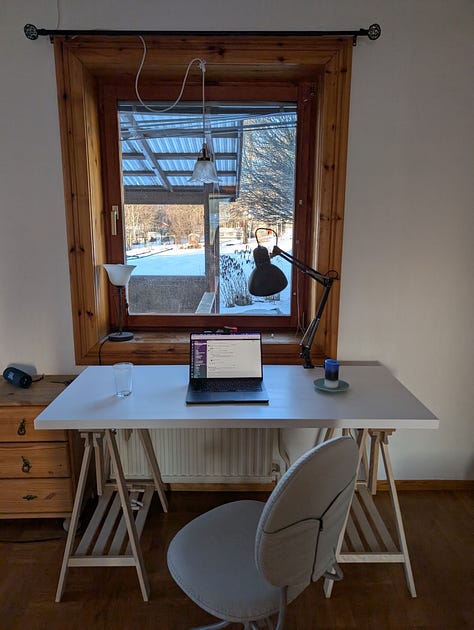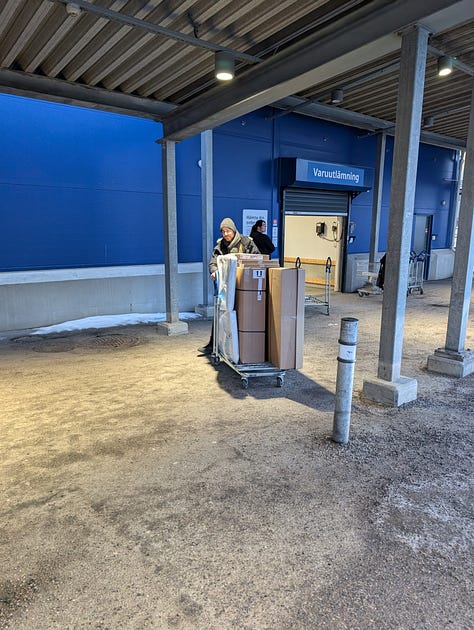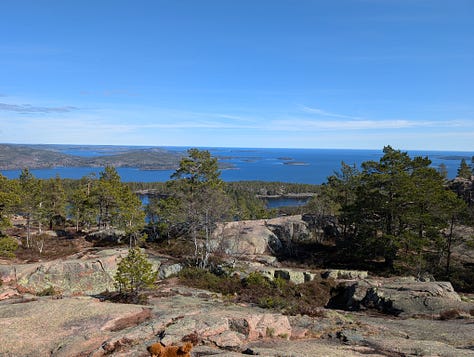From Baghdad to Birsta
In the year 1834, just 189 years before Rocket Bean Café opened on Vana-Kalamaja and expanded my living room, 135 coins from the Abbasid Caliphate and the Persian Samanid dynasty were found in the small village of Birsta in northern Sweden.
These coins can be dated back to the early 900s, in part thanks to the detailed Arabic inscriptions on them:
It was the Vikings who brought home treasures from the Mediterranean to their ancestral land. The sea journey on a Viking longship, by a conservative estimate, would take around 33 days to cover the distance of about 10,000 kilometres to Syria.
Isn’t that amazing?
Almost 200 years ago, someone found that one thousand years ago, people traveled by ship for over a month to do god knows what, in the service of god knows who, getting handsomely rewarded in gold, just to sail back to where they came from.
Think about the many different cultures, climes, and conflicts those sailors encountered.
A thousand years ago, Estonians weren’t yet under someone else’s yoke.
Math, astronomy, and literature flourished under Islam – Baghdad and Córdoba being the intellectual hubs of the time before European cities forcefully reclaimed that title.
It was the height of Viking rule in the North: Dublin, Normandy, Kyiv, Greenland and Vinland in North America marking the largest extent of Viking influence.
It was in this time of expansion, turmoil, collapse, and rebirth of empires, that our gold coins made the long journey from a crowded loud hot yellow desert, to an empty quiet white one.
A thousand years later, much has changed, but some things also stayed the same.
Today, Birsta is essentially a town-sized shopping mall, Sweden’s third-largest of that kind.
I’ve been to Nyland two out of the four planned times this year already – once in February, dragging my friend Mete along to gently force him to experience the peace of Northern Sweden, unplugging from the hustle and bustle of Tallinn, careers, and ambitions.



And another time in May, bringing family and a friend along. Adventuring, playing, exploring, cooking and relaxing together for a few days. An excellent way to recharge.



Both times we went to Birsta, because it’s the home of the closest IKEA, being just one hour away by car.
Centuries ago it was a hub for trading skins and pelts, now you can buy fake fur carpets at Bauhaus.
In the process, I’ve gotten more clarity about the house and where I want to develop it. It still is in an excellent location for being a safe haven, a creative retreat and all kinds of other activities that require a change of scenery with a smittering of civilization.
However, it also turning more and more into a home. Yes, a vacation home, but still a home. The more people I bring there, the more time I spend there myself, the more it is starting to feel like a place with a soul.
Given the many small things that still need to be done around the house, it is a troubled soul, but a long and loving treatment over the coming years will fix that.
Good memories have been made there already multiple times, and with every trip the local community, history, culture and terrain become more legible.
It has become a place I look forward to returning to.
A few more years of gentle care, and this will be a feeling others will share.
A mere 20 years ago, Jared Diamond described his view of the future in the closing words of Collapse as two competing accelerating forces. The big question in essence is, whether the rapid pace of change will change cultures and economies faster than it will change our environment into an inhospitable one.
I feel that AI is a harbinger of this greatly accelerated pace of change, similar in scale to the spread and adoption of the internet.
It changes everything.
Sending paper mail for communication purposes stopped making sense in a world where you can have video calls with people across the globe. Processes that relied on paper mail eventually went away (yes, even in Germany, mostly).
Everything being connected all the time became the new normal, and a baseline expectation.
And it will be the same with AI.
It enables new ways of working that were just impossible before.
Now are the years when everyone is collectively trying to figure out what this means in practice.
Uncertainty is high, confidence low, and opportunity is ripe for those with an appetite for risk.
I used to be very skeptical of AI in Software Engineering, focusing on what it can’t do, using this as an excuse to avoid having to face the uncomfortable truth that maybe I need to radically change the way I think about software, my bread and butter for the last 15 years.
This blog was quiet, because I had to put my more tech-related thoughts somewhere:
Changes like this one don’t happen often in your lifetime, and while I’m late with realizing the importance of this change compared to some of my peers I like to think that I’m not in the bottom 5% of late adopters.
As the scale of the change dawned on me, it became harder and harder to focus on my work, and on Friday I’ve finally drawn the consequences of this:
I’m leaving Modash to join Sourcegraph in June, developing Amp under Thorsten’s leadership.
I was too young to act when the internet came about 30 years ago.
Given that it took 30 years for a change like AI to manifest, the next one is due when I’m 65 years old.
So the time to act is now, and the right place to be is where the action is.
And this closes the loop from Baghdad to Birsta, from Tallinn to San Francisco – the distance is roughly 10,000 kilometres. Arabic gold coins are distant from viking villages, yet their impact was felt there. The same is true for this new technology.
Exciting times are ahead, and for the first time in a long time, I feel like my professional experience is aligned with what can deliver value, and what brings me joy.
Stay tuned!






Nice post man, glad to hear from you!
It's always so fulfilling to read through your thoughts and actions. Let's schedule a call somewhat soon to discuss about our views regarding the thrilling changes in the AI world. I send you a big hug from Venezuela or from a 124 days' sea journey on a Viking longship (estimated by an AI, of course).